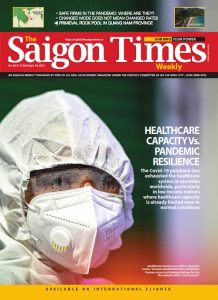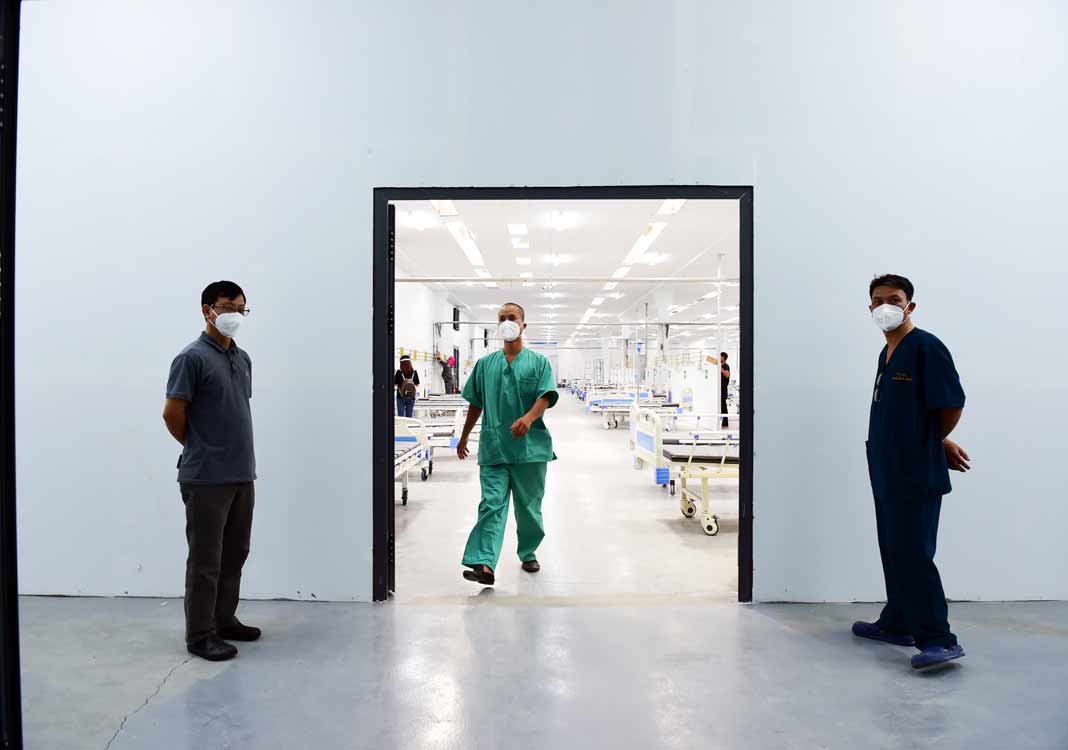The Covid-19 pandemic has exhausted healthcare systems in countries all over the world. The capacity to take care of patients and protect health workers has so far been seriously eroded globally, particularly in low-income nations and regions where the healthcare network is already limited even in normal conditions.
The following account tries to review the capacity of healthcare system in countries worldwide and that in Vietnam.
Countries’ capacity of healthcare at a glance
Normally, developed nations—for instance Australia, New Zealand and Japan—maintain a relatively high number of doctors and nurses, which has helped them better cope with the Covid-19 pandemic. The same ratio in countries earning lower income—such as Papua New Guinea, Cambodia and Laos—is smaller, which in principle cripples their resilience to the pandemic.
Aside from healthcare human resources, the ratio of hospital beds to 1,000 people varies greatly from one country to another. In nations with high average income, low average income and corresponding income in the Asia-Pacific region, this ratio ranges from 2.7 to 3 per 1,000 people. It is lower than the 4.6-bed level in the Organization for Economic Cooperation and Development (OECD) and the 5.4-bed level in high income countries in the Asia-Pacific region.
A closer look would result in a considerable difference among the above groups. Japan, the Republic of Korea and the Democratic People’s Republic of Korea have more than 10 beds per 1,000 people each, while Bangladesh, Pakistan, Cambodia and India have less than one bed each.
Along with the number of beds, the capacity of the intensive care unit (ICU) matters much in dealing with the raging pandemic because a significant proportion of Covid-19 patients have to be treated in ICUs. Despite the many definitions of ICU currently in use, OECD statistics show that ICU capacity among nations differs wildly. In Asia-Pacific, the number of ICU beds per 100,000 people ranges from 13.5 beds in Brunei to less than one bed in Myanmar and Bangladesh. Roughly speaking, the capacity of ICU treatment in Asia-Pacific nations which gain high average and middle average income is from two to three times higher than that in nations with low average income and low income in the same region.
By and large, the substantial difference in nations’ healthcare capacity mirrors the considerable gap in readily available resources and investment in the healthcare sectors among countries.

Vietnam’s capacity of healthcare at a glance
This part deals with some criteria for healthcare capacity in Vietnam and in HCMC, the city which is being hit hard by the fourth resurgence of Covid-19.
HCMC has two doctors per 1,000 people, which is double the country’s average (0.9) and equivalent to that of Hong Kong and China. The city has 3.4 nurses per 1,000 people, three times higher than the average number in Vietnam and equal that of Malaysia and Fiji. In Asia-Pacific, HCMC can be classified into the group with high number of doctors and low number of nurses. Meanwhile, Vietnam belongs to the group of nations with low number of doctors and low number of nurses.
HCMC has 4.3 hospital beds per 1,000 people (the nationwide average is 2.9), equivalent to the number of OECD nations in Asia-Pacific.
In reality, the healthcare system in HCMC also treat provincial migrants which are about 22% of the city’s officially registered population as well as some people in the Mekong Delta, which is why the ratios of hospital beds and doctors per 1,000 people in HCMC are actually much lower than released statistics. Health infrastructure in both HCMC and Vietnam often runs at full capacity. Furthermore, the comparison of the number of hospital beds does not take into account basic medical facilities, the level of modernity and specialty medical equipment.
What’s more, Covid-19 patients with chronic diseases have to face a “double danger,” making them more vulnerable to complications and death. Additionally, those patients have to be subject to indirect adverse effects due to a sudden disruption of basic treatment services they normally have.
Primary healthcare helps relieve the burden on the entire healthcare system as the former provides comprehensive care and prevention in and after a health crisis. A primary healthcare network which fails to ensure its systematicality at the grassroots level should be improved as soon as possible.
One of the conditions for the “new normal” in countries worldwide is the enhancement of the capacity of the healthcare system, in particular ICU capacity and the number and quality of health work force. Equally important is the capacity to detect, manage and prevent new infections. As a result, on a national scale, priority should be given to investment in the number of hospital beds as well as the quality of basic healthcare equipment corresponding to the number of existing beds.
From 2022 onward, which is hopefully the period of economic recovery on a national scale, particularly in big cities, focus should be placed on investment in improving the capacity of primary healthcare at all levels to enhance the capacity to cope with future pandemics. At the same time, the digital transformation process should be accelerated via budget allocation for preferential loan interest, credit underwriting and public investment nationwide in general and in big cities in particular. Digital tools employed in the healthcare sector will help maintain continuous treatment for patients with chronic diseases as well as the classification and telemedicine for infected patients.
Healthcare services are a labor-intensive sector. Vietnam should therefore rebuild her strategy for human resources training in this industry in the context of the “new normal.” The health labor force should include both physical and mental personnel.
By Tran Hung Son(*)
(*)University of Economics and Law, Vietnam National University – HCM









